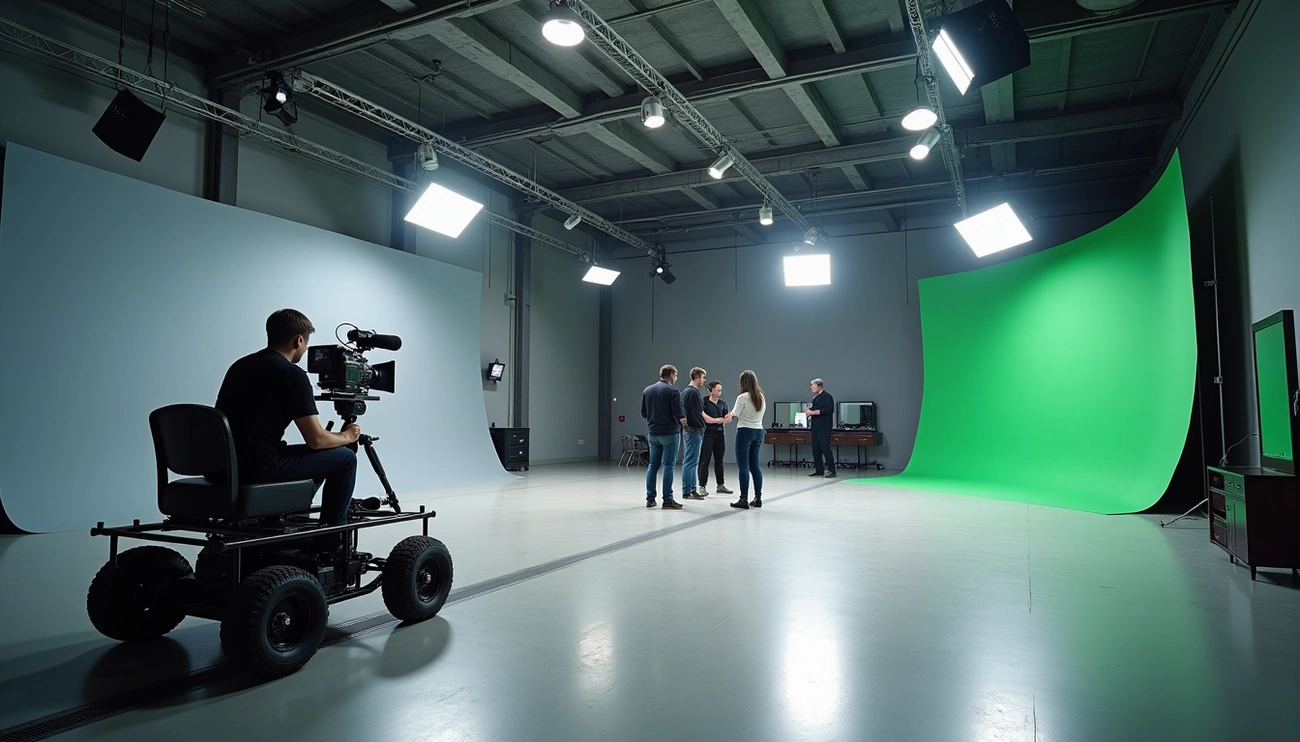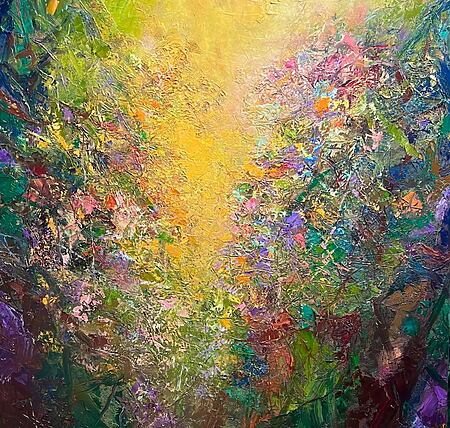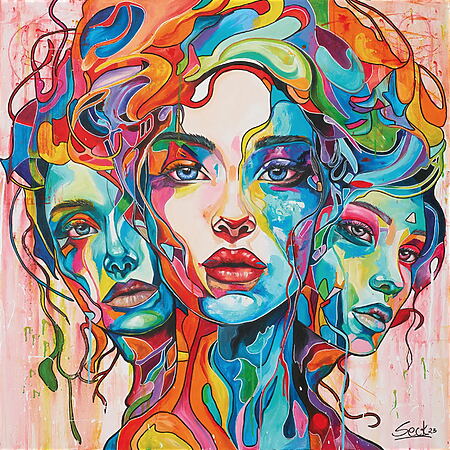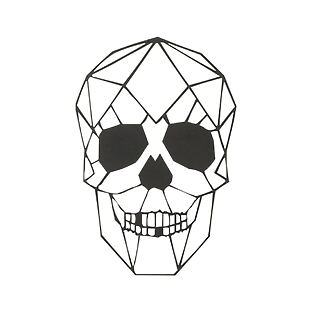What lies behind the heavy doors of film studios? A world where sophisticated technology and creative ideas work hand in hand, yet the finished product often remains hidden from the public. For a glimpse behind the scenes of a film production studio, we cast our curious eye over a few promising film studios in southern Germany.
At the heart of the facility of a film production company we examined are two adjacent film studios. Movable wall elements allow for flexible room layout. Studio areas between 200 and 280 m², a ceiling height of 8.5 m, and a 180-degree cove offer virtually endless creative possibilities. Ceiling crane systems with a load capacity of up to 1,250 kg make it possible to realize even the most complex shots.
The electric camera vehicle, specially developed for a film studio in southern Germany, is a particularly eye-catching custom cam car. It delivers crystal-clear, vibration-free footage at speeds of up to 42 km/h—an indispensable tool for dynamic scenes where every second counts.

Image is for illustrative purposes and was created using image AI.
For more than 30 years, well-known directors and producers in the entertainment industry have relied not only on production companies in Berlin-Brandenburg. Several film studios in southern Germany, Austria, and Switzerland are also attracting attention with their growing reputation.
But how exactly does this professional machinery, comprised of various disciplines, work? We also asked ourselves this question. As part of this study, we took a look behind the scenes of major film production companies in German-speaking countries: from sophisticated spatial concepts and highly specialized technology to breathtaking stunts and special effects.
The central areas of a film studio
Many people only work towards the result without enjoying their work and their lives.”
once declared award-winning filmmaker David Lynch , known for 'Twin Peaks' and 'Mulholland Drive' .
Every modern film studio operates like a precisely tuned clockwork. Specialized departments work seamlessly together, creating a complex ecosystem of film production.
Studio areas and room layout of a film studio
Flexible, spacious production spaces are the foundation of any successful film production. Studio Babelsberg in the greater Berlin area sets standards in this area: 21 state-of-the-art studios are located on an impressive 173,000 m² site.
The flexible outdoor sets, such as the Metropolitan Backlot , are stunning. Covering an area of over 15,000 m², four street sections are designed in different architectural styles – from historic alleyways to futuristic skylines, almost any city in the world can be depicted here.
But even when looking for a film studio in southern Germany, you will find one with extensive production space and facilities.
Green screen and coves
Special effects without green screen surfaces? Hardly imaginable today. Studio Babelsberg boasts one of the largest green screen walls in Europe, measuring an impressive 660 m². The coved corner at the end allows for seamless 90-degree illumination – a must for professional effects shots.

photo by Mohamed Nohassi @coopery, via Unsplash
Coves, the gentle curves between the wall and floor, are especially important for full-body shots. They make cropping people in front of the green screen much easier. Studios like Black Forest Studios go one step further: They offer flexible roll-out coves in white, gray, or green, allowing for maximum customization.

Photo by Mohamed Nohassi @coopery, via Unsplash
Make-up, lounges and gallery
The well-being of the crews is also essential for professional film studios. Makeup areas with ideal lighting are always provided. In Hamburg-Ottensen, Luna Studios a hair and makeup salon with four workstations and two reverse washers – a luxury that is reflected in the quality of the shots.
Cozy lounges create a relaxed atmosphere between shoots. At StudioGutenswil , functionality and comfort go hand in hand: The lounge seats up to 20 people, and in nice weather, the backyard invites you to relax with its view of apple trees.
Recording studio and workshop in film studios
Film mixing with Dolby Atmos , dedicated recording rooms with variable acoustics, and professional dubbing systems are standard features in modern post-production facilities. Some studios even have 3D audio labs for groundbreaking sound design projects.

Photo by Frederick Shaw @dropfastcollective, via Unsplash
Studio Babelsberg 's art department demonstrates what it means to go big: On more than 10,000 square meters, complete sets are created using carpentry, sculpture, Styrofoam and plastics technology, metal construction, and fine art painting. This is the heart of film production – without these workshops, the boldest visions would be mere dreams.
Technology behind the lens: Cam Cars and Techno
How do you create the captivating, dynamic tracking shots that captivate us as viewers? Film studios in southern Germany, in particular, continually invest in sophisticated technology that powers spectacular footage.
Electric camera vehicle used
The CINECAR is a state-of-the-art camera vehicle. Electric drives enable silent and vibration-free filming. Thanks to the integrated lift column, precise camera movements are possible while driving, adding extra dynamism to the footage. Compared to conventional boom systems, this compact solution requires less time to set up and can easily handle narrow streets and dense urban areas.
If you think of the narrow streets of historic city centers like those in Munich, Regensburg, Nuremberg or Augsburg, these specific advantages quickly become apparent.
SuperTechno 30: The telescopic crane
the SuperTechno 30 achieves perspectives that would otherwise be impossible. Whether using handwheels, a joystick, or a directional pad, the controls are customized to the cameraman's preferences. The crane can effortlessly transport cameras weighing up to 35 kilograms at speeds of up to 2.8 meters per second.
Some of the most impressive scenes from blockbusters such as “Titanic” , “Pearl Harbor” and “Harry Potter” are thanks to such a crane.
Low loader for moving driving shots
With a low loader , realistic driving scenes are possible without any restrictions. The camera is securely mounted on the trailer, while the filmed vehicle is pulled. This allows the actors to fully concentrate on their performances while creating real movement.
Special buildings for tailor-made needs
The Scorpio arm represents maximum flexibility on four wheels. Mounted on a 510 hp Mercedes ML63 AMG, the arm features a 3.5-meter-long boom that can be extended to up to 5.6 meters. TÜV-certified maximum speeds of 149 km/h allow for breathtaking chase scenes.
MAGAMO vehicles (makeup, wardrobe and mobile offices) are the flexible solutions for every film set.
Truss rig and static solutions
Not everything has to be in motion all the time. In difficult terrain or for special requirements, truss systems stable foundations for camera setups. These modular structures are individually adaptable and offer maximum stability with minimal setup time – sometimes consistency is the key to a flawless image.
Action and special effects: How tension is created in film studios
Spectacular action scenes are the result of hard work. Every adrenaline-pumping sequence is the result of a delicate interplay of safety protocols and a creative vision. Professional film studios specialize in shooting even the riskiest scenes under controlled conditions.
Coordination of stunts and safety
All high-risk scenes in a production fall under the responsibility of the stunt coordinator . In their role as head of the stunt department, they create impressive sequences of movements, but their primary task is to ensure the safety of everyone involved. They develop comprehensive risk management strategies that include emergency plans and medical precautions. The fee, which ranges from 900 to 1100 euros per day, reflects the significant responsibility of this position.
Fire, height and body stunts
Fire stunts are among the most visually impressive effects. Professional stuntmen use skin-friendly flame retardants and specialized protective clothing. For high-altitude stunts such as controlled falls, abseiling devices, fall mats, and sophisticated safety systems are necessary. Before every shoot, every element is meticulously checked in film studios – yet a residual risk always exists.
Vehicle stunts and chases
The chase in "Mad Max: Fury Road" caused a 33 percent increase in the test audience's heart rate. Special technicians prepare the vehicles for such sequences with immense care. In "The Italian Job," Mini Coopers were deliberately used instead of high-performance vehicles—a creative choice that allowed for some extraordinary chase scenes.
Fight choreographies and rigging
Fight sequences are created through detailed choreography. Stunt coordinators work closely with directors to create action scenes that fit seamlessly into the story. Rigging systems , which are specialized rope structures, allow objects to move in complex ways without compromising safety.
Underwater stunts and special effects
Underwater filming is one of the riskiest stunt categories. For "Mission: Impossible 8," Tom Cruise had to go underwater in a custom-made suit with an illuminated mask. The diving equipment allowed him to stay underwater for a maximum of ten minutes before his body was stressed by a lack of oxygen.
Extreme challenges require specialized security teams to monitor every step.
Film Studio Süddeutschland: Collaboration of absolute professionals
Various actors must work together like the often-quoted cogs of a delicate mechanism to ensure the success of spectacular productions. In the film industry in southern Germany, artistic ambitions and economic necessity now converge even beyond Berlin—a balancing act that demands the utmost professionalism.
Directing and producing: an essential collaboration
The film producer decides on the realization of projects and bears financial responsibility from the initial idea to theatrical release. The director bears artistic responsibility. A trusting collaboration is a prerequisite for this division. The producer coordinates content and organizational aspects, finds solutions in the event of delays, and ensures that the project stays on track.
Three stages, one goal
A production at a film production company always follows a tried-and-tested three-pronged process. Pre-production involves developing concepts, securing locations, and obtaining permits. During the production phase , the actual filming takes place, whether on location or in the studio. Post-production transforms the raw footage into the finished work through editing, sound, and effects.
Film studios: an industry between art and vision of the future
Film studios in southern Germany have developed into a remarkable success story. The key to their success isn't primarily their impressive equipment and spacious production spaces – it's the daily interplay of innovation and experience that makes these studios so valuable for an increasing number of film and TV productions.
Using state-of-the-art technology, studios combine their years of expertise and experience. They do far more than just provide space: As creative partners, they transform complex visions into tangible reality.
But the real power lies in the people. Stunt coordinators who perfectly master the interplay of safety and spectacle. Cameramen who capture moving moments with sophisticated technology. Craftsmen who create space in their workshops. All of these people are responsible for turning an idea into a film that moves millions.

Owner and Managing Director of Kunstplaza. Publicist, editor, and passionate blogger in the field of art, design, and creativity since 2011. Successful completion of a degree in web design as part of a university program (2008). Further development of creativity techniques through courses in free drawing, expressive painting, and theater/acting. Profound knowledge of the art market through many years of journalistic research and numerous collaborations with actors/institutions from art and culture.

















